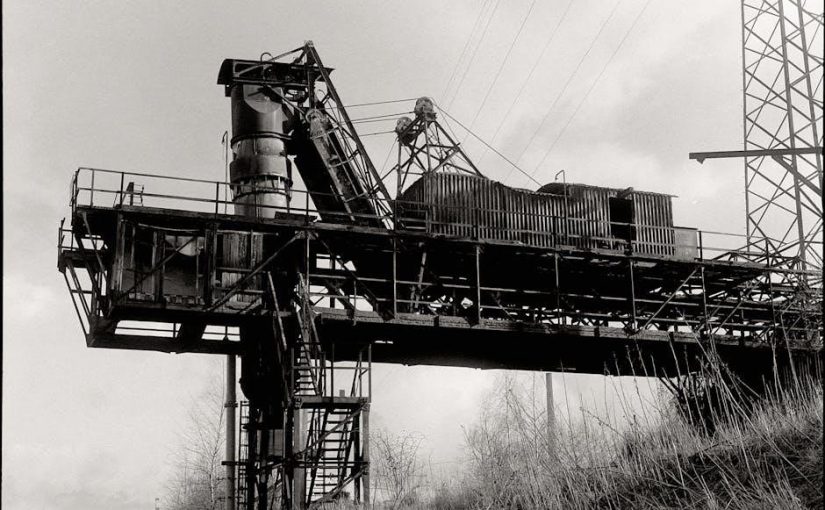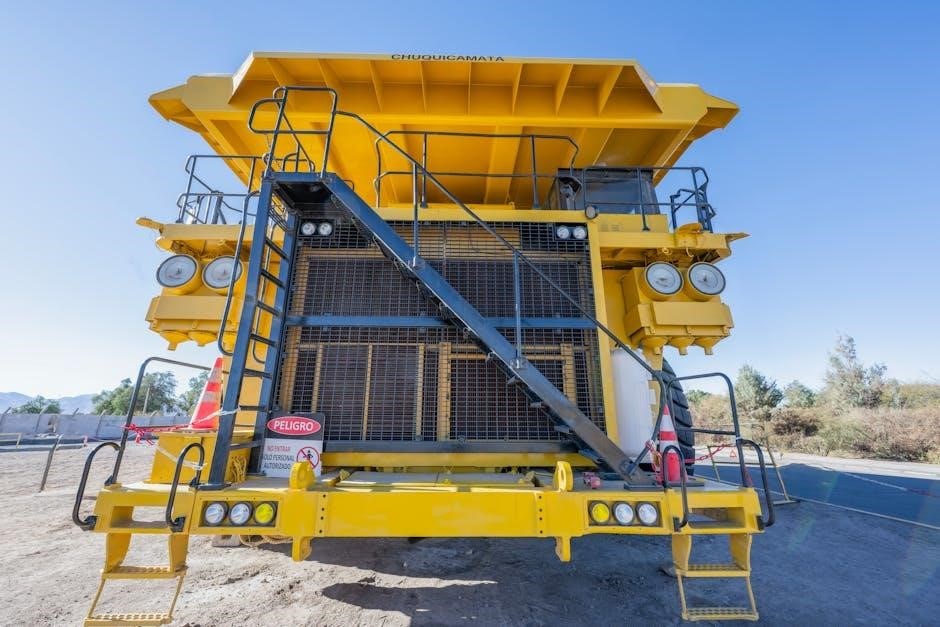Blackstone Griddles: A Comprehensive Guide (Updated December 31, 2025)
As outdoor cooking gains popularity, Blackstone griddles offer versatility for all skill levels, from searing to smash burgers, enhancing family meals and tailgating events.
What is a Blackstone Griddle?
Blackstone Griddles represent a modern evolution in outdoor cooking, moving beyond traditional grills to offer a versatile, flat-top surface ideal for a wide range of culinary creations. Unlike grills with grates, a Blackstone features a solid steel cooking surface, distributing heat evenly for consistent results. This design allows for techniques like searing, sautéing, and even breakfast cooking – mirroring the functionality of a diner-style flat top.
These griddles are particularly popular for their ability to cook multiple items simultaneously, making them perfect for family gatherings or tailgating events. The large cooking surface accommodates everything from pancakes and bacon to burgers and stir-fries; Their ease of use and cleaning further contribute to their growing appeal, offering a convenient alternative to conventional grilling methods.
The Rise in Popularity of Flat-Top Griddles
The surge in flat-top griddle popularity, exemplified by Blackstone, stems from a desire for versatile outdoor cooking. Traditionally, grilling involved navigating uneven heat and flare-ups. Flat-tops offer consistent temperatures across the entire surface, simplifying the cooking process and reducing the risk of burnt food. This ease of use appeals to both novice and experienced cooks.
Furthermore, the ability to cook diverse meals – from breakfast staples to elaborate dinners – on a single appliance is a major draw. The “romantic” appeal of outdoor cooking, combined with the practicality of a flat-top, has fueled this trend. As families and friends gather for cookouts and tailgates, Blackstone griddles provide a communal and enjoyable cooking experience.
Blackstone Griddle Models: An Overview
Blackstone offers a range of griddle models to suit various needs and budgets. The 28-inch griddle serves as a popular standard choice, ideal for families and smaller gatherings. Stepping up, the 36-inch model provides a larger cooking surface, perfect for larger groups and more elaborate meals. For those seeking premium features, the ProSeries griddles boast enhanced construction and capabilities.
These models cater to diverse cooking styles, from simple breakfasts to complex culinary creations. Wayfair and Walmart frequently offer sales and discounts on these griddles, making them accessible to a wider audience. Understanding the differences between these models is crucial for selecting the best fit for your outdoor cooking aspirations.
Blackstone 28-Inch Griddle: The Standard Choice
The Blackstone 28-inch griddle consistently emerges as a top pick for both novice and experienced outdoor cooks. Its manageable size makes it versatile for patios, balconies, and even camping trips. Frequently featured in sales at retailers like Wayfair and Walmart, it offers excellent value. This model’s portability and efficient heating capabilities make it ideal for smaller families or couples.
It’s a fantastic entry point into the world of flat-top cooking, capable of handling everything from pancakes and bacon to burgers and stir-fries. The 28-inch size strikes a balance between cooking space and convenience, making it a practical choice for everyday use.
Blackstone 36-Inch Griddle: For Larger Groups
Stepping up in size, the Blackstone 36-inch griddle is designed with larger families and frequent entertainers in mind. This model provides significantly more cooking surface, allowing you to prepare meals for gatherings without feeling cramped. It’s a popular choice for tailgating, backyard barbecues, and any occasion where feeding a crowd is essential.
While requiring more storage space, the expanded surface area unlocks greater culinary possibilities. You can simultaneously cook multiple dishes, streamlining meal preparation and keeping everyone satisfied. Retailers often feature this model during sales events, making it an accessible upgrade for serious outdoor cooks.
Blackstone ProSeries Griddles: Premium Features
The Blackstone ProSeries griddles represent the pinnacle of the brand’s offerings, boasting enhanced features for the dedicated outdoor chef. These models typically include upgraded burners for more consistent heat distribution, heavier-duty construction for increased durability, and often, integrated features like side shelves and dedicated grease management systems.
ProSeries griddles are designed for those who demand the best in performance and convenience. They often come with wind guards to maintain optimal cooking temperatures and larger cooking surfaces for complex meals. While representing a higher investment, the ProSeries delivers a superior cooking experience and lasting value.
Blackstone Griddle Features & Benefits
Blackstone griddles distinguish themselves through remarkable versatility, extending far beyond traditional breakfast fare. Their flat-top surface excels at searing steaks, stir-frying vegetables, and crafting perfect smash burgers – a diner-style experience at home. This adaptability makes them ideal for diverse culinary creations and family gatherings.
Ease of use and cleaning are also key benefits. The flat surface simplifies cooking and minimizes sticking, while the removable grease trap streamlines cleanup. Blackstone griddles offer a convenient and enjoyable outdoor cooking experience, appealing to both novice and experienced cooks alike, fostering a romantic and magical atmosphere.
Versatility in Cooking: Beyond Breakfast
While renowned for breakfast staples like pancakes and bacon, Blackstone griddles truly shine with their expansive cooking capabilities. They effortlessly handle searing steaks to perfection, stir-frying vibrant vegetables, and creating authentic hibachi-style meals. The flat-top surface is ideal for smash burgers, fajitas, and even delicate seafood.
This appliance isn’t limited by season or cuisine; it adapts to any culinary desire. From weekend brunch to elaborate outdoor feasts, the Blackstone transforms into a versatile cooking station. It’s a system capable of handling anything you throw on it, making it a centerpiece for family gatherings and impressive cookouts.

Ease of Use and Cleaning
Blackstone griddles are celebrated for their user-friendly design, requiring minimal learning curve for both novice and experienced cooks. The consistent, even heat distribution ensures perfectly cooked food every time, eliminating hot spots common in traditional grills. Operation is straightforward, making it accessible for all ages and skill levels.
Cleaning is surprisingly simple. After cooking, scrape off excess food residue with a spatula, then pour water onto the hot surface to steam-clean. A final wipe-down with a paper towel leaves the griddle ready for seasoning or storage, minimizing cleanup time and maximizing cooking enjoyment.

Blackstone Griddle Accessories: Enhancing Your Cooking Experience
To truly unlock your Blackstone’s potential, consider expanding beyond the griddle itself. Essential accessories include high-heat spatulas designed for the flat-top surface, robust scrapers for efficient cleaning, and oil dispensing bottles for even seasoning. These tools streamline cooking and maintenance, improving overall performance.
Optional additions like custom-fit covers protect your investment from the elements, while sturdy stands offer comfortable cooking heights. Comprehensive tool kits provide a range of specialized implements, catering to diverse culinary creations. Investing in accessories elevates your griddle experience, transforming it into a versatile outdoor kitchen.
Essential Accessories: Spatulas, Scrapers, and Bottles
A high-quality spatula is paramount for maneuvering food across the expansive Blackstone surface; look for stainless steel with angled edges. Robust scrapers are crucial for removing grease and food residue post-cooking, maintaining a clean cooking zone. These prevent buildup and ensure even heating during subsequent sessions.
Oil bottles, designed for precise application, are vital for seasoning the griddle and preventing sticking. They allow for even distribution, creating a non-stick barrier. These three accessories – spatula, scraper, and oil bottle – form the foundation for successful Blackstone cooking, enhancing both ease of use and culinary results.
Optional Accessories: Covers, Stands, and Tool Kits

While not essential, covers protect your Blackstone griddle from the elements, extending its lifespan and reducing maintenance. Stands elevate the cooking surface to a comfortable height, minimizing back strain during extended cooking sessions, especially beneficial for taller individuals.
Comprehensive tool kits bundle spatulas, scrapers, seasoning bottles, and often include additional items like tongs and basting brushes. These kits offer convenience and value, providing everything needed for a complete griddle experience. Investing in these optional accessories enhances usability, portability, and overall enjoyment of your Blackstone griddle, tailoring it to your specific needs.
Where to Buy Blackstone Griddles: Retailers and Deals
Blackstone griddles are widely available at major retailers like Wayfair and Walmart, offering competitive pricing and frequent promotions. Wayfair often features substantial sales, including “Black Friday in July” and “Warehouse Clearout” events, presenting opportunities for significant discounts. Walmart consistently provides competitive prices and broad availability, making it a convenient option for quick purchases.
Keep an eye out for seasonal sales and clearance events to maximize savings. New York Post highlights ongoing deals, while retailer websites regularly update their promotions. Comparing prices across different platforms ensures you secure the best possible offer on your desired Blackstone model.
Wayfair: Frequent Sales and Warehouse Clearouts
Wayfair stands out as a prime destination for Blackstone griddle purchases, consistently offering attractive deals and substantial discounts. Their “Black Friday in July” sale is a particularly noteworthy event, providing significant savings on a wide range of models. However, the “Warehouse Clearout” sale is arguably the most lucrative, occurring only a couple of times annually.
During these clearouts, Blackstone griddles can be found starting at remarkably low prices, often around $90. This makes Wayfair an ideal choice for budget-conscious shoppers. Regularly checking Wayfair’s website is recommended to capitalize on these fleeting opportunities and secure a great deal.
Walmart: Competitive Pricing and Availability
Walmart consistently presents itself as a strong contender in the Blackstone griddle market, renowned for its competitive pricing and widespread product availability. As fall approaches, coinciding with the peak tailgating and cookout season, Walmart frequently introduces substantial markdowns on outdoor cooking essentials, including Blackstone griddles.
These discounts make it an excellent time to upgrade your outdoor cooking setup. Walmart’s extensive retail network and robust online presence ensure that Blackstone griddles are readily accessible to a broad customer base. Regularly checking Walmart’s website or visiting local stores is advisable to discover the latest offers.

Blackstone Griddle Cooking Techniques
Mastering Blackstone cooking unlocks a world of culinary possibilities. Searing on a Blackstone requires high heat – preheating is crucial for achieving that perfect crust on steaks and other proteins. For smash burgers, a well-seasoned griddle and a firm spatula are essential to create those crispy edges and flavorful patties.
The flat-top surface excels at even heat distribution, ideal for pancakes, eggs, and stir-fries. Experiment with different oils and fats to enhance flavors. Remember to scrape the griddle between batches to prevent sticking and maintain optimal cooking conditions. Consistent practice will refine your technique and yield delicious results.
Searing and High-Heat Cooking
Achieving a restaurant-quality sear on your Blackstone griddle demands proper technique. Begin by fully preheating the surface to a high temperature – this is paramount. A thin layer of high-smoke-point oil, like avocado or canola, prevents sticking and promotes browning. Pat your meat dry before placing it on the griddle; moisture hinders the Maillard reaction, crucial for flavor development.
Avoid overcrowding; work in batches to maintain consistent heat. Resist the urge to move the meat frequently – allow it to develop a deep, rich crust before flipping. Utilize a sturdy spatula to ensure clean contact and prevent tearing. High-heat cooking on a Blackstone delivers exceptional results.
Smash Burgers on a Blackstone Griddle
Creating perfect smash burgers on your Blackstone is surprisingly simple. Form loosely packed, 2-3 ounce balls of 80/20 ground beef – don’t overwork the meat! Preheat the griddle to medium-high heat and lightly oil the surface. Place the beef balls onto the hot griddle and immediately smash them flat with a sturdy spatula, applying firm, even pressure.

Season generously with salt and pepper. Allow the burgers to cook undisturbed for approximately 2-3 minutes, developing a crispy, flavorful crust. Scrape under the burger to release it, flip, and cook for another minute or two. Top with your favorite fixings and enjoy!
Blackstone Griddle Maintenance and Care
Proper maintenance ensures your Blackstone griddle lasts for years. After each use, scrape off food residue while the griddle is still warm. Then, pour a small amount of oil onto the surface and spread it evenly with a spatula. This prevents rust and maintains the seasoning. For deeper cleaning, use a Blackstone-approved scraper and degreaser.

Avoid abrasive cleaners or steel wool, as they can damage the seasoning. Regularly seasoning your griddle – applying a thin coat of oil and heating it – is crucial. Store your griddle covered to protect it from the elements and prevent rust formation.

Seasoning Your Blackstone Griddle
Seasoning is vital for a non-stick surface and rust prevention. Begin with a clean, dry griddle. Apply a very thin, even coat of high-smoke-point oil (flaxseed, avocado, or canola) across the entire cooking surface. Turn the burners to medium-high heat. Allow the oil to heat and begin to smoke, then continue heating for about 15-20 minutes.
You’ll notice the oil polymerizing and darkening. Repeat this process 3-4 times, applying a fresh, thin coat of oil after each heating cycle. A well-seasoned griddle will have a dark, smooth, and slightly glossy appearance. Regular cooking and oiling after each use will maintain the seasoning.

Cleaning and Rust Prevention
After each use, scrape the griddle while still warm with a metal spatula to remove food debris. Pour a small amount of water onto the griddle to steam-clean and loosen remaining particles; scrape again. Wipe clean with a paper towel. Avoid soap, as it can strip the seasoning. For stubborn residue, use a Blackstone-approved scraper or cleaning tool.
To prevent rust, always apply a thin coat of oil after cleaning and drying the griddle. Store covered. If rust appears, scrub it off with steel wool, then re-season the affected area. Consistent maintenance ensures longevity and optimal performance.
Blackstone Griddles for Tailgating and Outdoor Events
Blackstone griddles are ideal for tailgating and outdoor events, offering a communal cooking experience. Ensure a level setup and secure propane tank connection. Pre-season before your event for optimal non-stick performance. Bring essential accessories like spatulas, scrapers, and oil bottles.
Consider a carry bag or stand for portability. Plan your menu for efficient griddle use – smash burgers, pancakes, and fajitas are crowd-pleasers. Remember to dispose of grease responsibly and maintain a safe cooking distance from flammable materials. Enjoy the fun and flavorful experience!
Blackstone Griddles: A Family-Friendly Cooking Option
Blackstone griddles transform cooking into a family activity, fostering togetherness and creating memorable meals. Prioritize safety by establishing a kid-free zone around the hot griddle. Involve children in age-appropriate tasks like washing vegetables or stirring ingredients.
Simple recipes like pancakes, grilled cheese, or quesadillas are perfect for little chefs. The flat-top surface minimizes splatter, making it safer for everyone. Encourage experimentation and let kids customize their creations. Cleaning up together reinforces responsibility and makes it a fun family affair.
Blackstone Ownership & Company History
Founded with a vision to bring diner-style cooking to backyards, Blackstone Griddles quickly gained traction. In 2019, a significant shift occurred with the acquisition by Kirkbi, Blackstone, and the Canada Pension Plan Investment Board. This strategic move provided resources for continued innovation and expansion.
Despite the ownership change, Blackstone maintained its commitment to quality and accessibility. The company continued to refine its griddle designs and expand its accessory line. This acquisition signaled confidence in Blackstone’s market position and potential for future growth, solidifying its place as a leader in outdoor cooking.
Kirkbi, Blackstone, and Canada Pension Plan Investment Board Acquisition (2019)
In 2019, Blackstone Griddles underwent a pivotal ownership transition, acquired jointly by Kirkbi, Blackstone, and the Canada Pension Plan Investment Board. This wasn’t a restructuring of the company’s core principles, but rather a strategic investment to fuel further expansion and innovation. Kirkbi, the investment arm of The LEGO Group, brought long-term vision.
Blackstone, a global investment firm, offered financial expertise, while the Canada Pension Plan Investment Board provided substantial capital. Crucially, this acquisition didn’t alter the fundamental structure or product direction of Blackstone Griddles, ensuring continued focus on quality and customer satisfaction.
Blackstone Griddle vs. Traditional Grill: Which is Right for You?
The choice between a Blackstone griddle and a traditional grill hinges on cooking style and versatility. Grills excel at high-heat searing, imparting smoky flavors ideal for steaks and burgers. However, Blackstone griddles offer a flat surface perfect for everything from pancakes and eggs to stir-fries and smash burgers.

Griddles provide more even heat distribution, simplifying delicate cooking tasks. While grills require more skill to manage flare-ups, griddles are user-friendly. Ultimately, a griddle’s versatility makes it a compelling alternative, especially for families seeking diverse outdoor cooking options beyond traditional barbecue.
















































































